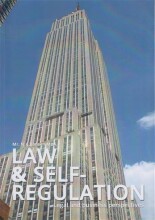Summary: Principles Of Managerial Finance
- This + 400k other summaries
- A unique study and practice tool
- Never study anything twice again
- Get the grades you hope for
- 100% sure, 100% understanding
Read the summary and the most important questions on Principles of managerial finance
-
1 Chapter 1 +2 begrippen
This is a preview. There are 45 more flashcards available for chapter 1
Show more cards here -
Marginal cost–benefit analysis
•is the economic principle that states that financial decisions should be made and actions taken only when the added benefits exceed the added costs -
foreign bond market
•is a market for bonds issued by a foreign corporation or government that is denominated in the investor’s home currency and sold in the investor’s home market. -
international equity market
•allows corporations to sell blocks of shares to investors in a number of different countries simultaneously. -
2 Chapter 3 begrippen
This is a preview. There are 18 more flashcards available for chapter 2
Show more cards here -
Generally accepted accounting principles (GAAP)
Are the practice and procedure guidelines used to prepare and maintain financial records and reports; authorized by the Financial Accounting Standards Board (FASB). -
current rate (translation) method
is a technique used by U.S.-based companies to translate their foreign-currency-denominated assets and liabilities into dollars, for consolidation with the parent company’s financial statements, using the year-end (current) exchange rate. -
3 Chapter 5 begrippen
This is a preview. There are 8 more flashcards available for chapter 3
Show more cards here -
Discounting cash flows
is the process of finding present values; the inverse of compounding interest. -
nominal (stated) annual rate
is the contractual annual rate of interest charged by a lender or promised by a borrower. -
effective (true) annual rate (EAR)
is the annual rate of interest actually paid or earned. -
4 Chapter 4 begrippen
This is a preview. There are 25 more flashcards available for chapter 4
Show more cards here -
Free cash flow
is the amount of cash flow available to investors (creditors and owners) after the firm has met all operating needs and paid for investments in net fixed assets (NFAI) and net current assets (NCAI). -
Long-term (strategic) financial plans
lay out a company’s planned financial actions and the anticipated impact of those actions over periods ranging from 2 to 10 years.
- Higher grades + faster learning
- Never study anything twice
- 100% sure, 100% understanding






















![English vocabulary in use : advanced ; [100 units of vocabulary reference and practice self-study and classroom use] Book cover image](https://app.studysmart.ai/uploads_prod_data/source/ANYx220/da0fc0aec8eb9003796d685a2248d940188d4cba.jpeg)








